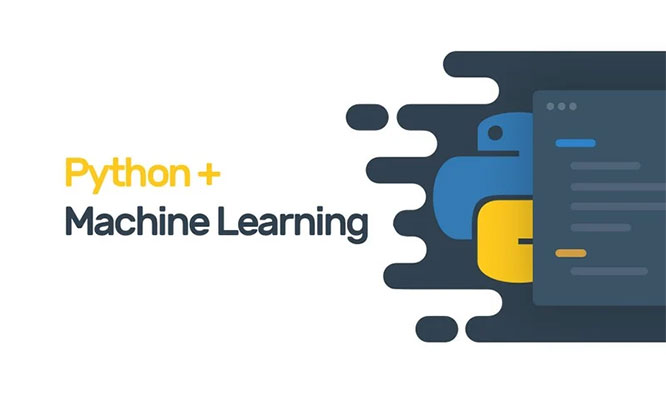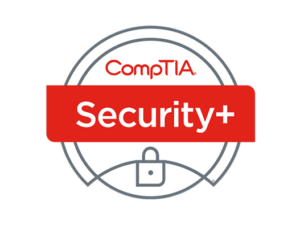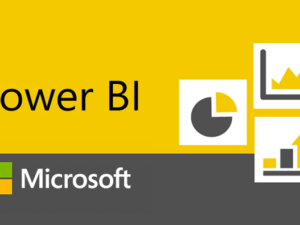Certs Learning’s Machine Learning Course using Python is designed to make you grab the concepts of Machine Learning. The Machine Learning training will provide deep understanding of Machine Learning and its mechanism. As a Data Scientist, you will be learning the importance of Machine Learning and its implementation in python programming language. Furthermore, you will be taught of Reinforcement Learning which in turn is an important aspect of Artificial Intelligence. You will be able to automate real life scenarios using Machine Learning Algorithms. Towards the end of the course we will be discussing various practical use cases of Machine Learning in python programming language to enhance your learning experience.
Machine Learning Certification Training using Python
- Description
- Curriculum
- FAQ
- Reviews

I am text block. Click edit button to change this text. Lorem ipsum dolor sit amet, consectetur adipiscing elit. Ut elit tellus, luctus nec ullamcorper mattis, pulvinar dapibus leo.
Data Science is a set of techniques that enables the computers to learn the desired behavior from data without explicitly being programmed. It employs techniques and theories drawn from many fields within the broad areas of mathematics, statistics, information science, and computer science. This course exposes you to different classes of machine learning algorithms like supervised, unsupervised and reinforcement algorithms. This course imparts you the necessary skills like data pre-processing, dimensional reduction, model evaluation and also exposes you to different machine learning algorithms like regression, clustering, decision trees, random forest, Naive Bayes and Q-Learning.
After completing this Machine Learning Certification Training using Python, you should be able to:
- Gain insight into the ‘Roles’ played by a Machine Learning Engineer
- Automate data analysis using python
- Describe Machine Learning
- Work with real-time data
- Learn tools and techniques for predictive modeling
- Discuss Machine Learning algorithms and their implementation
- Validate Machine Learning algorithms
- Explain Time Series and it’s related concepts
- Gain expertise to handle business in future, living the present
Certs Learning’s Python Machine Learning Certification Course is a good fit for the below professionals:
- Developers aspiring to be a ‘Machine Learning Engineer’
- Analytics Managers who are leading a team of analysts
- Business Analysts who want to understand Machine Learning (ML) Techniques
- Information Architects who want to gain expertise in Predictive Analytics
- ‘Python’ professionals who want to design automatic predictive models
The pre-requisites for the Machine Learning Certification Training using Python includes development experience with Python. Fundamentals of Data Analysis practised over any of the data analysis tools like SAS/R will be a plus. However, Python would be more advantageous. You will be provided with complimentary “Python Statistics for Data Science Course” as a self-paced course once you enrol for the course.
-
1Introduction to Data Science
Goal: Get an introduction to Data Science in this Module and see how Data Science helps to analyze large and unstructured data with different tools.
Objectives: At the end of this Module, you should be able to:
- Define Data Science
- Discuss the era of Data Science
- Describe the Role of a Data Scientist
- Illustrate the Life cycle of Data Science
- List the Tools used in Data Science
- State what role Big Data and Hadoop, Python, R and Machine Learning play in Data Science
Topics:
- What is Data Science?
- What does Data Science involve?
- Era of Data Science
- Business Intelligence vs Data Science
- Life cycle of Data Science
- Tools of Data Science
- Introduction to Python
-
2Data Extraction, Wrangling,
Goal: Discuss the different sources available to extract data, arrange the data in structured form, analyze the data, and represent the data in a graphical format.
Objectives: At the end of this Module, you should be able to:
- Discuss Data Acquisition techniques
- List the different types of Data
- Evaluate Input Data
- Explain the Data Wrangling techniques
- Discuss Data Exploration
Topics:
- Data Analysis Pipeline
- What is Data Extraction
- Types of Data
- Raw and Processed Data
- Data Wrangling
- Exploratory Data Analysis
- Visualization of Data
Hands-On/Demo:
- Loading different types of dataset in Python
- Arranging the data
- Plotting the graphs
-
3Introduction to Machine Learning with Python
Learning Objectives: In this module, you will learn the concept of Machine Learning and its types.
Topics:
- Python Revision (numpy, Pandas, scikit learn, matplotlib)
- What is Machine Learning?
- Machine Learning Use-Cases
- Machine Learning Process Flow
- Machine Learning Categories
- Linear regression
- Gradient descent
Hands On/Demo:
- Linear Regression – Boston Dataset
Skills:
- Machine Learning concepts
- Machine Learning types
- Linear Regression Implementation
-
4Supervised Learning - I
Learning Objectives: In this module, you will learn Supervised Learning Techniques and their implementation, for example, Decision Trees, Random Forest Classifier etc.
Topics:
- What are Classification and its use cases?
- What is Decision Tree?
- Algorithm for Decision Tree Induction
- Creating a Perfect Decision Tree
- Confusion Matrix
- What is Random Forest?
Hands On/Demo:
- Implementation of Logistic regression
- Decision tree
- Random forest
Skills:
- Supervised Learning concepts
- Implementing different types of Supervised Learning algorithms
- Evaluating model output
-
5Dimensionality Reduction
Learning Objectives: In this module, you will learn about the impact of dimensions within data. You will be taught to perform factor analysis using PCA and compress dimensions. Also, you will be developing LDA model.
Topics:
- Introduction to Dimensionality
- Why Dimensionality Reduction
- PCA
- Factor Analysis
- Scaling dimensional model
- LDA
Hands-On/Demo:
- PCA
- Scaling
Skills:
- Implementing Dimensionality Reduction Technique
-
6Supervised Learning - II
Learning Objectives: In this module, you will learn Supervised Learning Techniques and their implementation, for example, Decision Trees, Random Forest Classifier etc.
Topics:
- What is Naïve Bayes?
- How Naïve Bayes works?
- Implementing Naïve Bayes Classifier
- What is Support Vector Machine?
- Illustrate how Support Vector Machine works?
- Hyperparameter Optimization
- Grid Search vs Random Search
- Implementation of Support Vector Machine for Classification
Hands-On/Demo:
- Implementation of Naïve Bayes, SVM
Skills:
- Supervised Learning concepts
- Implementing different types of Supervised Learning algorithms
- Evaluating model output
-
7Unsupervised Learning
Learning Objectives: In this module, you will learn about Unsupervised Learning and the various types of clustering that can be used to analyze the data.
Topics:
- What is Clustering & its Use Cases?
- What is K-means Clustering?
- How does K-means algorithm work?
- How to do optimal clustering
- What is C-means Clustering?
- What is Hierarchical Clustering?
- How Hierarchical Clustering works?
Hands-On/Demo:
- Implementing K-means Clustering
- Implementing Hierarchical Clustering
Skills:
- Unsupervised Learning
- Implementation of Clustering – various types
-
8Association Rules Mining and Recommendation Systems
Learning Objectives: In this module, you will learn Association rules and their extension towards recommendation engines with Apriori algorithm.
Topics:
- What are Association Rules?
- Association Rule Parameters
- Calculating Association Rule Parameters
- Recommendation Engines
- How does Recommendation Engines work?
- Collaborative Filtering
- Content-Based Filtering
Hands-On/Demo:
- Apriori Algorithm
- Market Basket Analysis
Skills:
- Data Mining using python
- Recommender Systems using python
-
9Reinforcement Learning
Goal: In this module, you will learn about developing a smart learning algorithm such that the learning becomes more and more accurate as time passes by. You will be able to define an optimal solution for an agent based on agent environment interaction.
Objective: At the end of this module, you should be able to
- Explain the concept of Reinforcement Learning
- Generalize a problem using Reinforcement Learning
- Explain Markov’s Decision Process
- Demonstrate Q Learning
Topics:
- What is Reinforcement Learning
- Why Reinforcement Learning
- Elements of Reinforcement Learning
- Exploration vs Exploitation dilemma
- Epsilon Greedy Algorithm
- Markov Decision Process (MDP)
- Q values and V values
- Q – Learning
- α values
Hands On:
- Calculating Reward
- Discounted Reward
- Calculating Optimal quantities
- Implementing Q Learning
- Setting up an Optimal Action
-
10Time Series Analysis
Goal: In this module, you will learn about Time Series Analysis to forecast dependent variables based on time. You will be taught different models for time series modelling such that you analyse a real time dependent data for forecasting.
Objective: At the end of this module, you should be able to:
- Explain Time Series Analysis (TSA)
- Discuss the need of TSA
- Describe ARIMA modelling
- Forecast the time series model
Topics:
- What is Time Series Analysis?
- Importance of TSA
- Components of TSA
- White Noise
- AR model
- MA model
- ARMA model
- ARIMA model
- Stationarity
- ACF & PACF
Hands on:
- Checking Stationarity
- Converting a non-stationary data to stationary
- Implementing Dickey Fuller Test
- Plot ACF and PACF
- Generating the ARIMA plot
- TSA Forecasting
-
11Model Selection and Boosting
Learning Objectives: In this module, you will learn about selecting one model over another. Also, you will learn about Boosting and its importance in Machine Learning. You will learn on how to convert weaker algorithms into stronger ones.
Topics:
- What is Model Selection?
- The need for Model Selection
- Cross-Validation
- What is Boosting?
- How Boosting Algorithms work?
- Types of Boosting Algorithms
- Adaptive Boosting
Hands on/Demo:
- Cross-Validation
- AdaBoost
Skills:
- Model Selection
- Boosting algorithm using python
-
12In-Class Project
You have been given a dataset which contains data from different Airlines. You have gathered the requirement from the client on the analysis that has to be performed using the dataset. The analysis is for different airports from which the airlines depart and arrive. The average delay time of an airline over a period of time and more.
View the recorded session of the class available in your LMS.
You can attend the missed session, in any other live batch.







